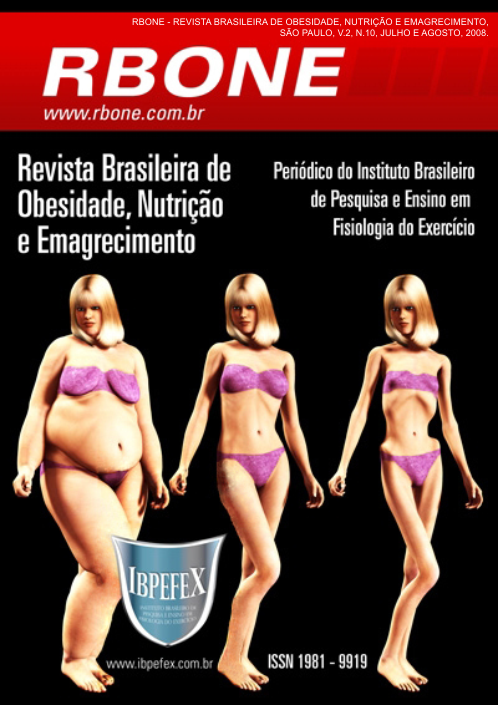Exercise resisted with weights in the reduction of the body fat practitioners of the musculação in the town of Cacoal / RO
Abstract
The present study it has for purpose to verify if the resisted exercise promotes alteration in the corporal composition. Today already it is possible to find research that defends this type of work for individuals with raised percentage of fat, alleging that a raised lean mass more generates an expense bigger caloric thus causing a reduction in the percentage of fat without it has also a reduction in the muscular mass generally causes for diets. This work comes to show that through the exercises also resisted it is possible to have a reduction in the percentage of fat and modifications in the total corporal mass. They had been part of this research 63, being of the masculine and feminine sex with ages between 18 and 35 years physically active. In this research it was evaluated, the percentage of fat through the mensuração of cutaneous folds and total corporal mass, in the daily pay and after-training, having been that these data had been retrospective of pupils who had only carried through exercises resisted in an academy. To the end of the work, that had duration of twelve weeks, a reduction of the percentage of fat was observed. It also had increase in the Total corporal mass, (corporal weight).
References
- American College of Sports Medicine. Position stand: progression models in resistance training for healthy adults. Med Sci Sports Exerc 2002;34: 364-80.
- Campos; Mauricio de arruda. Musculação: diabéticos, osteoporóticos, idosos, crianças, obesos. 2 º ed , Rio de Janeiro: Sprint, 2001.
- Fleck e Kraemer, W.J. Fundamentos do Treinamento de Força Muscular. 2º edição. Porto Alegre: Editora Artmed, 1999.
- Fox, Edward L.; Bowers, Richard W.; Merle, L. Foss. Bases fisiológicas da Educação Física e dos desportos. 4a edição. Ed. Guanabara Koogan. Rio de Janeiro. 1991.
- Guedes JR, Dilmar P. Personal training na musculação. Rio de Janeiro: Ed. Ney Pereira, 1994.
- Guedes, D.P. Atividade física, aptidão física e saúde. In: Brasil, Ministério da Saúde-Coordenação de Doenças Crônico-degenerativas. Orientações básicas sobre atividade física e saúde para os profissionais das áreas de educação saúde. Brasília: Ministério da Saúde, 1995, p. 51-62.
- Lohman, T.G. Advances in Body Composition Assessment. Human Kinetics Publishers. Champaign, Illinois, 1992.
- Pollock, M.; Wilmore J.H. Exercícios na saúde e na doença: avaliação e prescrição para prevenção e reabilitação. 2. ed. Rio de Janeiro : MEDSI,1993.
- Ramos, A.T. Atividade física: diabéticos, gestantes, 3a idade, criança e obesos. Ed. Sprint. Rio de Janeiro. 1997.
- Santaren, José Maria. Mobilização do Tecido Adiposo. Disponível em: . Acesso em 20 mar. 2006.
- Vieira, Sonia – Introdução a Bioestatística. 3º ed. Ampliada. Rio de Janeiro: Elsevier, 1980 – 14º reimpressão.
- Wilmore, J.H.; Costill, D.L. Fisiologia do esporte e do exercício. 2ª ed. São Paulo: Manole, 2001.
Authors who publish in this journal agree to the following terms:
- Authors retain the copyright and grant the journal the right of first publication, with work simultaneously licensed under the Creative Commons Attribution License BY-NC which allows the sharing of the work with acknowledgment of the authorship of the work and initial publication in this journal.
- Authors are authorized to enter into additional contracts separately for non-exclusive distribution of the version of the work published in this journal (eg, publishing in institutional repository or book chapter), with acknowledgment of authorship and initial publication in this journal.
- Authors are allowed and encouraged to post and distribute their work online (eg, in institutional repositories or on their personal page) at any point before or during the editorial process, as this can bring about productive change as well as increase impact and impact. citation of published work (See The Effect of Free Access).






